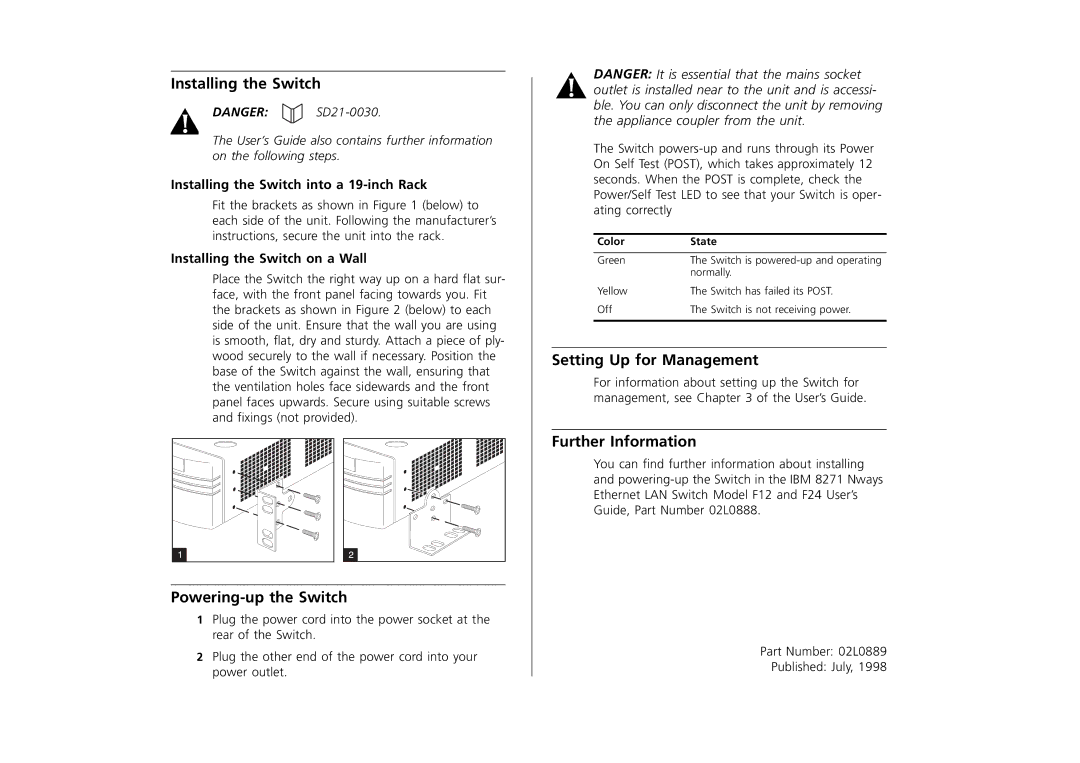F12, F24 specifications
IBM's F12 and F24 models represent significant advancements in the realm of computing and business solutions, catering to a variety of industry needs through integrated technologies and impressive performance features. These systems are engineered to meet the demands of modern enterprises, particularly in data processing, analytics, and operational efficiency.The IBM F12, known for its compact design and versatility, is tailored for organizations that require a balance between power and space efficiency. One of its main features is its ability to support a wide array of applications, from data analytics to customer relationship management systems. Equipped with robust processing units, the F12 leverages multi-core and high-frequency processors, allowing for rapid data processing and analysis. Additionally, the system's memory architecture is optimized for both speed and capacity, ensuring that heavy workloads and multitasking capabilities are seamlessly handled.
On the other hand, the F24 model is designed for higher performance and scalability, making it suitable for larger enterprises with more demanding computational needs. It boasts enhanced storage options, with advanced RAID configurations that provide redundancy and performance enhancements, ensuring data integrity and availability. The F24 also incorporates cutting-edge networking technologies, providing high bandwidth and low latency connections, essential for real-time data processing and cloud integrations.
Both F12 and F24 systems utilize IBM's renowned security features, which include sophisticated encryption protocols and advanced authentication measures. This built-in security makes them ideal for sectors where data protection is paramount, such as finance and healthcare. Furthermore, the systems support IBM's analytics platforms, enabling businesses to derive actionable insights from their data, thus driving informed decision-making.
The characteristics of the F12 and F24 are complemented by user-friendly interfaces and intelligent management tools, which allow for easy monitoring and maintenance. These features make adoption and integration into existing IT infrastructures relatively straightforward. The systems are also designed to be energy efficient, reflecting IBM's commitment to sustainable technology practices.
In summary, IBM's F12 and F24 models embody a blend of performance, security, and efficiency, making them suitable for a wide range of industries. Their advanced features, including powerful processing units, enhanced data storage capabilities, and robust security measures, ensure that organizations can meet the challenges of today's data-driven environment while preparing for future technological advancements.

